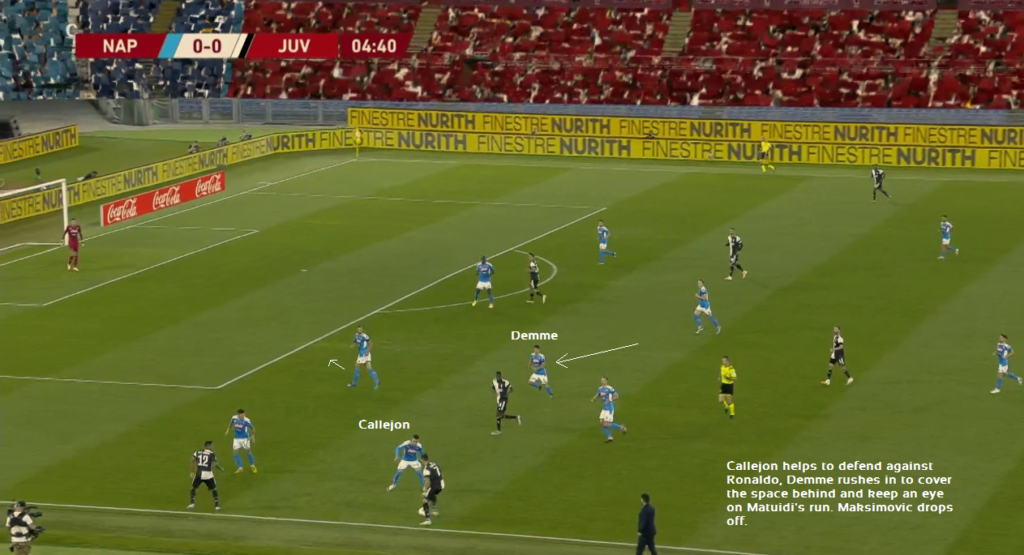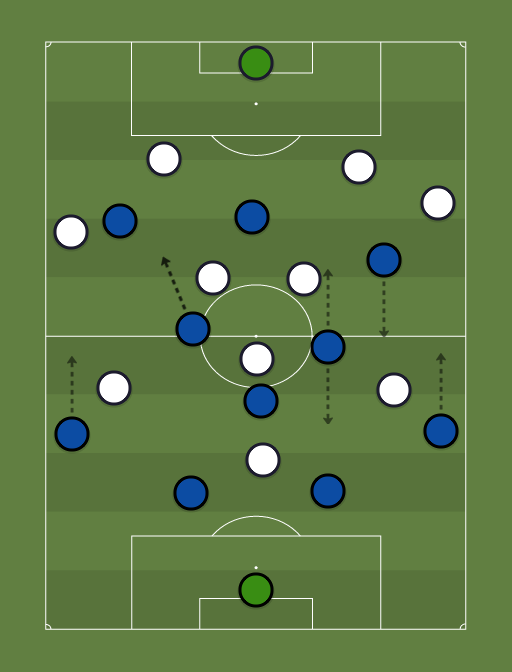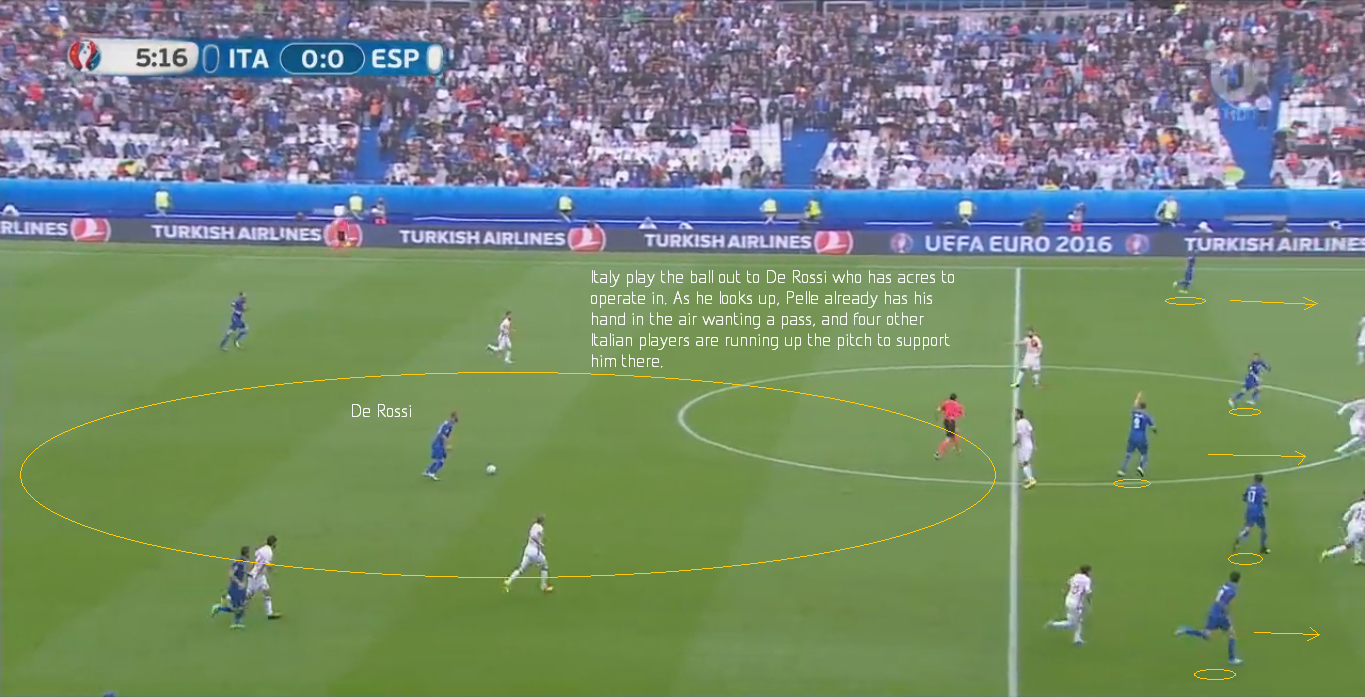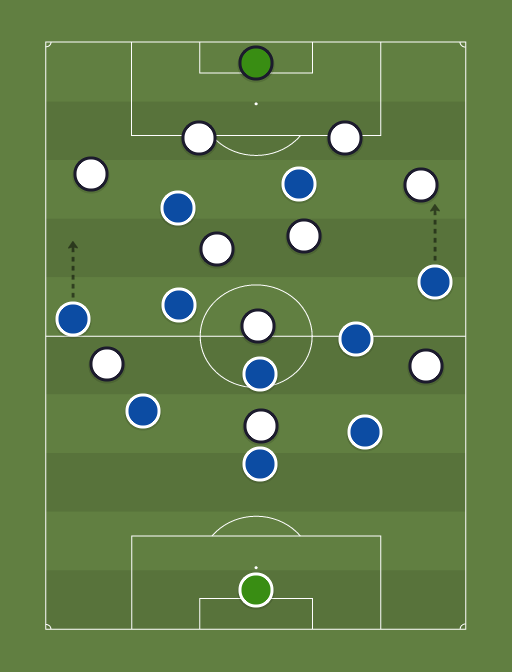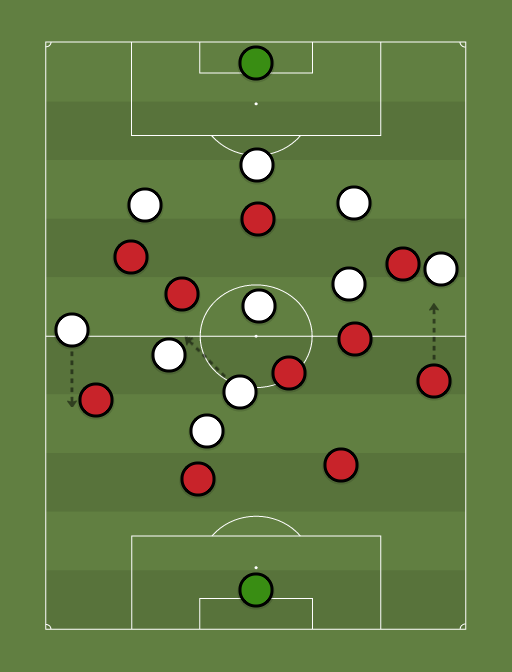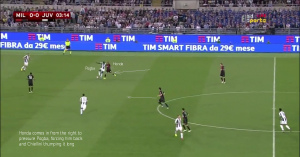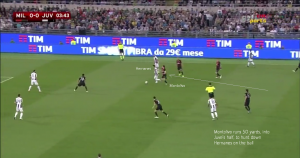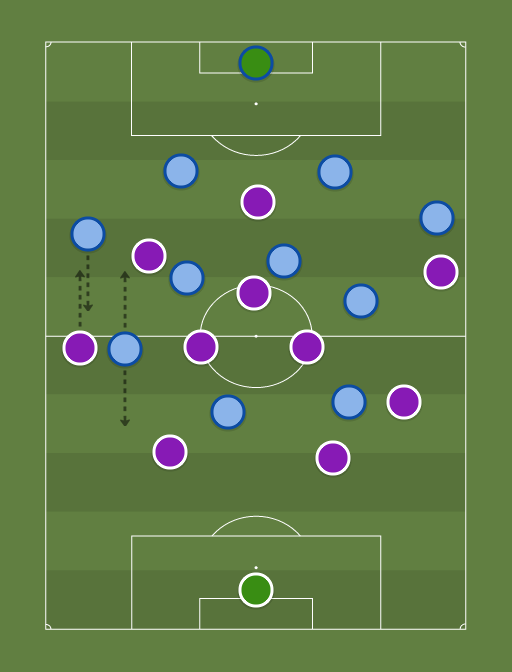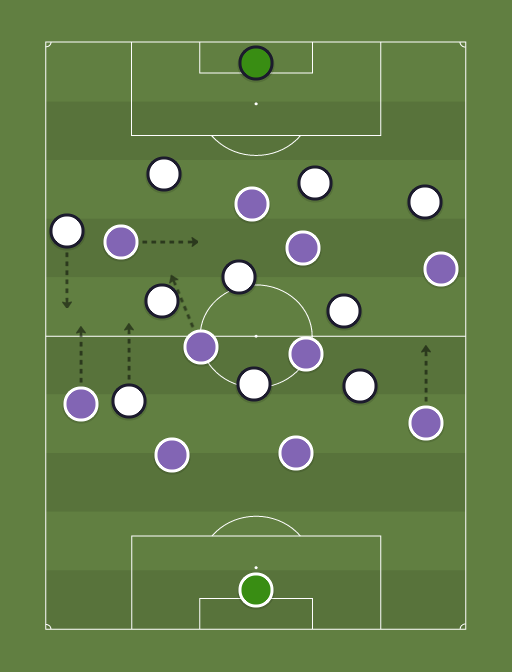Atalanta came into the game off the back of a run of twelve straight wins in all competitions, including 3 clean sheets previous to this meeting with Juve. The hosts suffered a surprise defeat to Milan and Sarri would be keen to put his side back on the right track towards the Serie A title. Both teams fielded a fairly predictable lineup, the biggest surprise perhaps being Pjanic dropping out and Matuidi coming back in, thus giving Bentancur a deeper role. De Ligt came back in at the heart of defence and Dybala slotted into the attack at the expense of Higuain. For Gasperini’s side, Palomino came back in after suspension, De Roon partnered Freuler in midfield, and Castange came in on the left for Gosens who was injured in the warm-up.
A tale of two halves;
First Half
Juventus made the better start of the teams, seizing the initiative first when Dybala received a straight pass through to his feet, and skipped away from Palomino, earning an early free-kick. This was to be an interesting question for the match – could Dybala (and later, as we saw, Ronaldo) make runs in and behind the Atalanta defence to make a direct route work for them? The ensuing free-kick came to nothing, but served as a potential indication as to what Juve’s intentions could be, with Bernardeschi combining with Dybala on the right hand side, and looking for chances in behind. Dybala’s movement dropping deep between the lines, and drifting out to the right, was something Atalanta had to identify as a threat from early on.
We then saw a shift in momentum. A brief warning sign for Juve occurred when Castagne ran down the left, after some nice interplay, and fired a cross in to Zapata, which he headed over. The Colombian striker was able to wander into the penalty area in space after his lay-off to Castange. The focus of the away side’s attentions continued down the left, aided by Zapata’s ability to receive the ball to his feet with his back to goal whilst holding off the defender, and play a simple pass to keep the move going. This encouraged Gomez over to the left as well, and at one point just after 7 minutes in, when the ball was fired into Zapata’s feet, he controlled it and played it out wide to Castagne again. But just after this move, Gomez gestured at Zapata that he wanted the return ball back inside, as he’d run into the space in the box and had a clear path to goal. De Ligt’s attention remained attracted to Zapata, in what seemed a good battle between the two, despite a painful foot into the downstairs regions of De Ligt midway through the half.
With Juve dropping off, Atalanta continued their probing and spells of possession, which was rewarded on 16 minutes with the first goal of the game. It didn’t directly come from a period of concentrated possession, but rather Freuler winning the ball back fantastically in midfield from Dybala. This then presented Gomez with the ball in a position where he could run past Bentancur, lay the ball off to Zapata and continue a run towards the edge of the box. When he received the ball back from Zapata, he swivelled to turn back inside De Ligt and poke a pass back into Zapata’s path. The Colombian striker had used his strength to get right-side of Bentancur who could then do nothing to stop Zapata from racing to goal and calmly slotting home. Rather than the measured build-up that Gasperini’s side had been practicing, the goal was more a case of catching Juve in a state that Gomez could expose the space and engineer a chance for Zapata, without the covering bodies of Bernardeschi or Cuadrado, both of whom were appealing for a free-kick and didn’t chase back in time. Incidentally, midway through the first half, Atalanta produced a similar opportunity to the goal – this time Castagne with a good tackle to dispossess Cuadrado, leaving him out of position and the Belgian to run down the wing with the ball, although ultimately running it out of play at the byline.
The two number 10s – Dybala & Gomez
Dybala appeared as Juve’s best performer, and best chance of a breakthrough, receiving the ball between the lines and looking to turn sharply to get behind Atalanta’s defence. Kind of a cross between Gomez and Zapata at the other end, Dybala would be the one to receive the ball back-to-goal, and look to drop deep and dart into the spaces as well. Palomino, in particular, had a problem to think about when asserting pressure on Dybala; a fine line between giving him too much space to operate and getting too tight and exposing the potential to get turned or put into a foot race. De Roon was better equipped to do this further up the pitch, when Dybala dropped deep, which is a more tiring job to do, but a less risky one. This was the case just over the half-hour mark, when De Roon stepped in to intercept a pass to Dybala from deep, regain possession, and ultimately lead to a dangerous cross from the left by Castange, which whistled just over Zapata’s head. There is sometimes a psychological edge to this pressure on Dybala around the centre-circle. If he does lose the ball under pressure after coming deep, and Atalanta mount an attack as a result, he then tends to avoid coming deep again if Juve retain possession. This makes it even harder for Juve to find an out-ball, and allows Atalanta more chances of forcing their opposition into playing a speculative pass once more.


